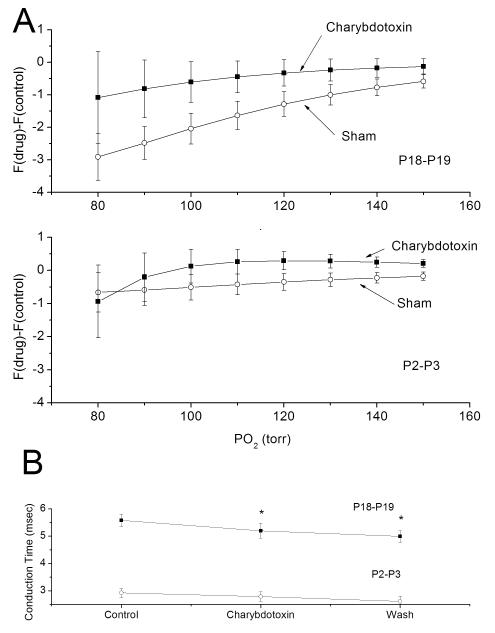Fig 2.
MaxiK channel blockade does not change the AP activity level at moderate levels of chemoreceptor stimulation in either the newborn or mature rat but increases conduction velocity in the mature. A: Average change in afferent AP rates between hypoxia response in the presence of charybdotoxin or sham-drug and the control response from chemoreceptors of mature (upper traces) and newborn (lower traces) rats (F(drug)-F(control)). Thus, the ordinate data are the differences between successive trials. On average, AP activity was slightly higher in the presence of charybdotoxin, but the magnitude change was small and failed to reach statistical significance in either the mature or newborn. B: Conduction time was measured before, during and following charybdotoxin exposure and analyzed us ANOVA with repeated measures. Conduction time was significantly different across the three measures for the mature and charybdotoxin conduction time was shorter in the presence of charybdotoxin compared to control (paired t-test with Bonferroni correction). Nerve conduction time was not significantly changed for the newborn.

